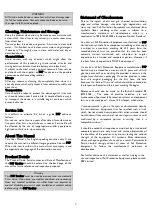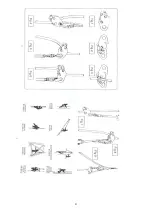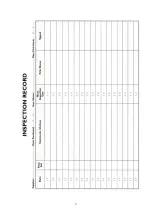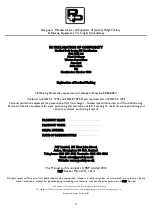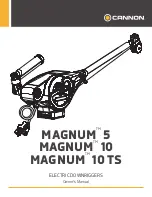
Thank you for purchasing this P&P Rocker. Please take the time to familiarize yourself with the correct use and operation.
It is imperative that this P&P Rocker is only used for its intended purpose and that it is subject to a periodic recorded detailed
inspection by a competent person.
To avoid personal injury, prior to using this P&P Rocker or training others to use it, CAREFULLY READ and understand these
instructions. If there is anything you do not understand DO NOT use the P&P Rocker, contact the supplier or P&P for further details.
Certain information in this manual is governed by law and is subject to change without prior notice. Great care has been taken to
ensure that the information is correct at the time of publication. However, it is the user’s sole responsibility to ensure that they fully
comply with all legal requirements. P&P will not accept liability for any inaccuracy or incorrectly stated legal requirements.
P&P operate a policy of continual improvement and reserve the right to change specifications without notice. The Manufacturer and /
or their recognised agents, directors, employees or insurers will not be held liable for consequential or other damages, losses or
expenses in the connection with or by reason of or the inability to use the P&P Rocker for any other purpose.
Note; training should only be delivered by a suitably qualified and competent person, i.e. a P&P products trainer.
Description
The P&P Rocker Rope Lock is designed for:
1.
Technical Rope access personnel who require a
multi use back-up piece of equipment.
2.
Technical Rescue personnel who require a multi use
back-up piece of equipment.
3.
Fixed Rope Sports and Industrial Climbers.
Functions
The P&P Rocker is a very adaptable device and can provide
several different rope access functions, however in ALL CASES
P&P recommend that users are trained in its proper use and
practical/physical limitations. Equipment specifiers / users must
ensure this device is used with compatible ropes and
connectors. Failure to ensure compatibility may result in an
unsafe condition or even connector/link failure.
•
Flexible rope safety brake.
•
Fixed rope safety brake.
•
Position locked onto rope. (Fig 6)
•
Belay brake.
•
Tensioned Line brake. (Fig 5)
•
Hauling system brake. (Fig 9)
•
Work positioning.
Warning
All work at height including the use of Personal
Protective Equipment (PPE) as a control measure is
subject to a suitable and sufficient risk assessment.
Fitting
1.
Connect Rocker to karabiner then to harness or
belay/anchor attachment point.
2.
Position the Rocker with swivel cheek (plate) towards
you and main karabiner connection hole to your right
hand side. (Fig 1)
3.
Open plate to allow loading of rope. (Fig 2)
4.
Load rope as diagram. (Fig 3)
5.
Close plates and connect to karabiner. (Fig 4)
6.
Check the Rocker is loaded onto the rope in the
correct direction for locking (trial lock). (Fig 5)
7.
Lock Rocker in position onto rope using parking cam.
(Fig 6)
8.
Recommended attachment strop is 10cm to 20cm.
(Figs 7 and 8)
9.
In rope access and / or rescue to offload or release:
Lock activate cam and place karabiner in single hole.
(See Fig 9). Check your working system is locked off
and pull in direction of slack rope.
Modifications and Repairs
No repairs, modifications or alterations are to be carried out
on this P&P Rocker.
Rescue Plan
Rescue Plan
As part of your risk assessment you MUST have in place
a rescue plan to deal with any emergency, which may
occur during use. Access to the user, directly or
indirectly and their safe retrieval is of paramount
importance, including preparations for dealing with
potential Post Fall Suspension Syncope
Inspection
Check your P&P Rocker for any damage or malfunction prior
to each and every use. If there is any doubt about the safe
condition of this device, it should be immediately withdrawn
from use and inspected by a competent person or returned to
the supplier/manufacturer.
This manual contains a section for recording Detailed
Inspections. On the back page of the manual is a space for the
user to record the product name, serial number and date of
manufacture.
Detailed Recorded Inspections should only be carried out by a
competent person, appointed by the employer. Additional,
recorded interim inspections may be required where risks
from transient arduous working conditions exist. This should
be identified through risk assessment.
These recorded inspections must be carried out at least every
12 months as a requirement of EN365; however in the UK the
HSE would like all fall prevention PPE to have a Detailed
Recorded Inspection every 6 months.
The pre-use check must include (but is not limited to)
•
Visually inspect for corrosion, excessive wear,
distortion or cracks.
•
Check for correct operation ensuring there is no
tendency for it to stick or jam.
If during the pre-use check the device is found to be or
believed to be faulty DO NOT use it. Remove from site to
ensure it cannot be used by anyone else.
2



